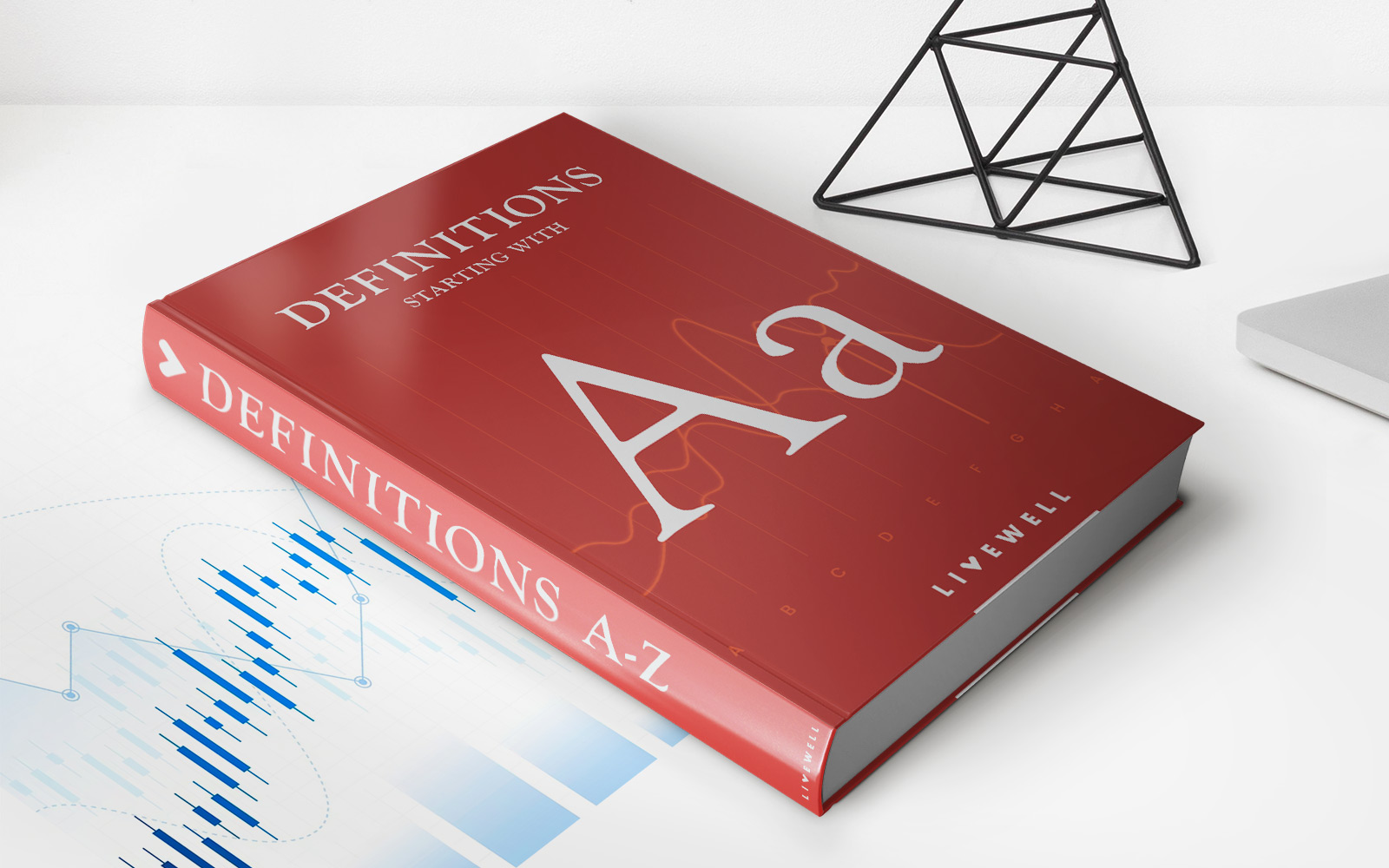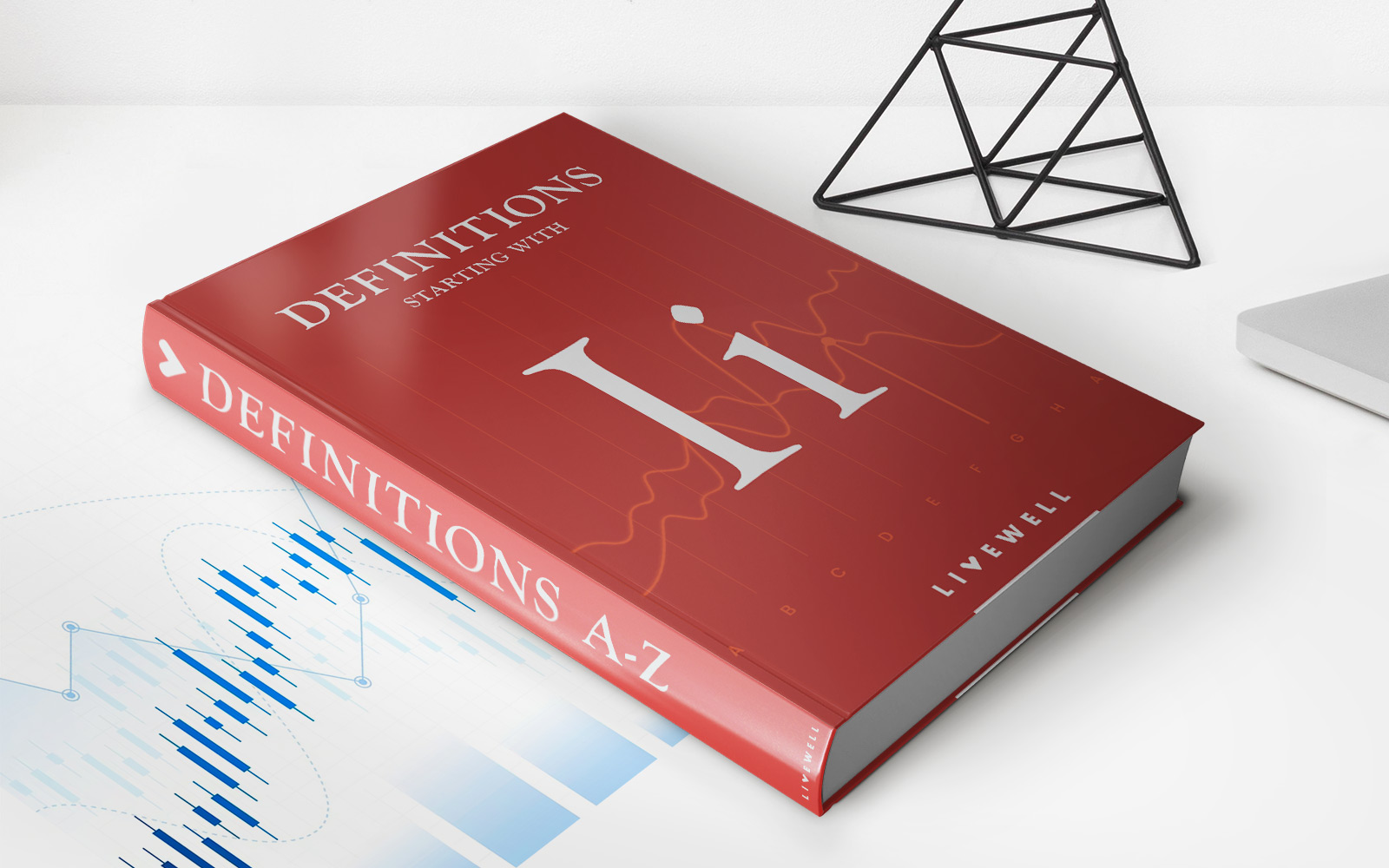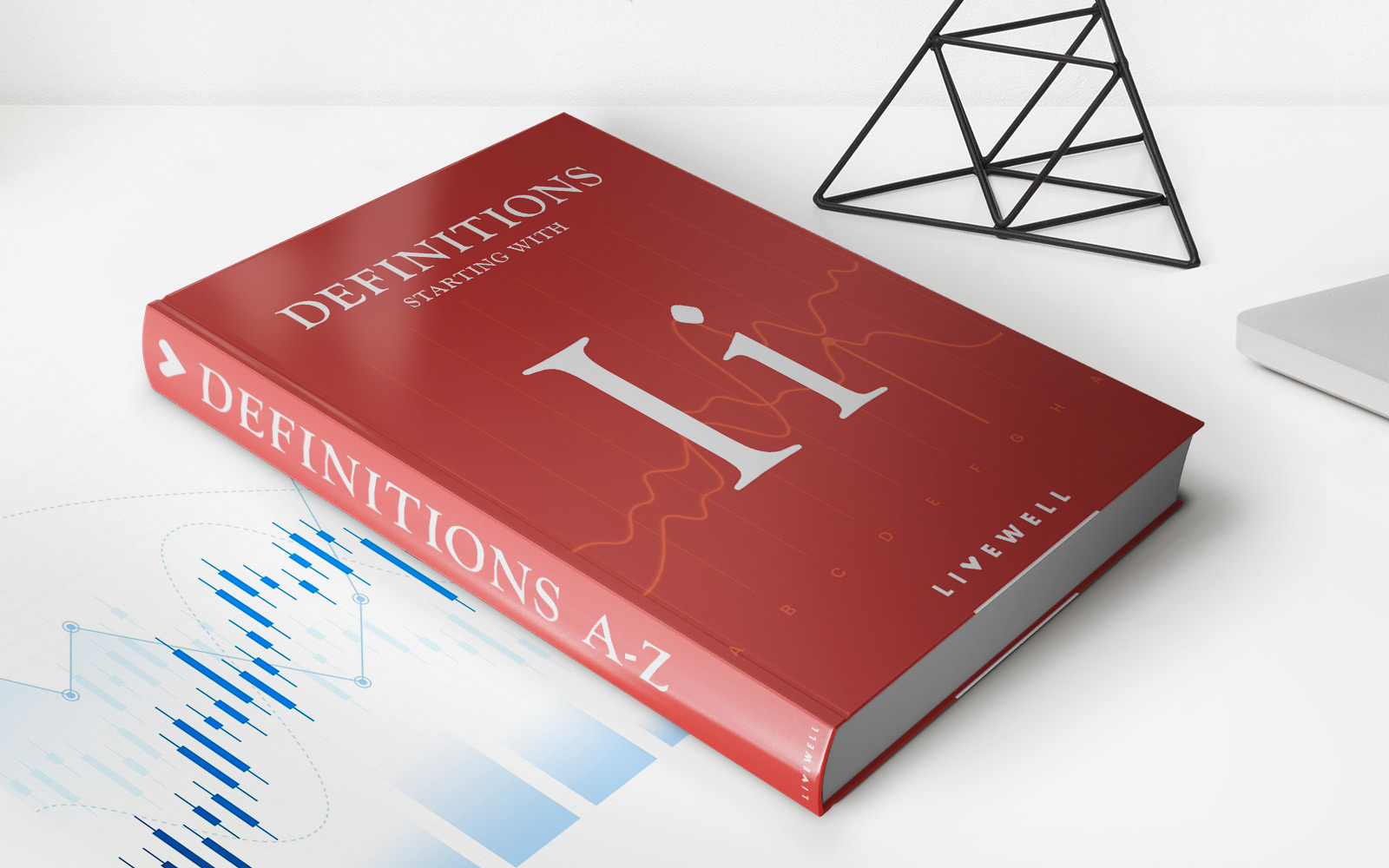

Finance
What Is ARO In Accounting
Published: October 8, 2023
Learn what ARO is in accounting and how it impacts finance. Gain a clear understanding of this important concept in just a few minutes.
(Many of the links in this article redirect to a specific reviewed product. Your purchase of these products through affiliate links helps to generate commission for LiveWell, at no extra cost. Learn more)
Table of Contents
Introduction
Accounting for Asset Retirement Obligations (ARO) is an important aspect of financial reporting for companies in various industries. An ARO represents a legal or constructive obligation to perform certain activities related to the retirement of a long-lived asset. These obligations typically arise from laws, regulations, contracts, or other policies.
AROs are common in industries such as manufacturing, oil and gas, utilities, and mining, where significant long-lived assets are used and eventually require retirement or decommissioning. Examples of these assets can include buildings, plants, pipelines, power generation facilities, and landfills.
Understanding how to account for AROs is essential for accurate financial statements and compliance with accounting standards. The Financial Accounting Standards Board (FASB) provides guidelines through the Accounting Standards Codification (ASC) Section 410, Asset Retirement and Environmental Obligations.
In this article, we will explore the definition of ARO, the accounting treatment for AROs, the recognition and measurement of AROs, as well as examples and disclosures related to AROs in accounting.
Definition of ARO
An Asset Retirement Obligation (ARO) is a legal or constructive obligation that an entity incurs for the retirement of a long-lived asset. It represents the cost that an entity is expected to incur in the future for the removal, dismantling, or restoration of an asset after it is no longer in use.
AROs typically arise from laws, regulations, contracts, or other policies that require companies to take certain actions to retire or decommission their assets responsibly. These actions can include environmental cleanup, site restoration, or asset disposal.
It’s important to note that an ARO is recognized when there is a present obligation, the obligation arises from a past event, and it is probable that an outflow of resources will be required to settle the obligation.
AROs can be categorized into two types:
- Legal Obligations: These are obligations that are explicitly stated in laws or regulations. For example, a company may be legally required to restore a site to its original condition after mining operations have ceased.
- Constructive Obligations: These are obligations that arise from past practices or actions that have created a valid expectation for the stakeholders. For example, a company may have a constructive obligation to dismantle and remove certain equipment at the end of its useful life, even if there are no explicit legal requirements to do so.
It’s important for companies to carefully assess and identify their AROs to ensure compliance with accounting standards and to accurately reflect their financial obligations. Failure to properly account for AROs can result in misleading financial statements and potential legal and regulatory consequences.
Accounting for ARO
Accounting for Asset Retirement Obligations (ARO) involves recognizing, measuring, and disclosing these obligations in the financial statements. The primary objective is to ensure that the company accurately reflects its future retirements costs and properly reports its financial obligations to stakeholders.
Companies must adhere to the guidelines provided by the Financial Accounting Standards Board (FASB) through the Accounting Standards Codification (ASC) Section 410, Asset Retirement and Environmental Obligations.
When accounting for ARO, there are three main aspects to consider: recognition, measurement, and disclosure.
Recognition and Measurement of ARO
The recognition of an ARO occurs when there is a present obligation, the obligation arises from a past event, and it is probable that an outflow of resources will be required to settle the obligation. The estimated cash outflow associated with the ARO is recognized as a liability on the balance sheet.
Once an ARO is recognized, it needs to be measured. The measurement of ARO involves determining the fair value of the obligation. Fair value represents the amount that would be required to settle the obligation in an orderly transaction between market participants at the measurement date.
Initial Measurement
When an ARO is initially recognized, it is measured at its fair value. The fair value includes not only the estimated cost of retiring the asset, but also the time value of money, the risk associated with the asset retirement, and any necessary site restoration costs.
If the fair value of the ARO cannot be reasonably estimated, companies may use alternative methods to measure the obligation, such as historical experience or industry averages. However, the use of alternative methods should be disclosed in the financial statements.
Subsequent Measurement
After initial recognition, the ARO is subject to subsequent measurement. The liability is adjusted over time to reflect the passage of time, changes in the estimated cash flow, and changes in the discount rate used to calculate the present value of the obligation.
Any changes in measurement of the ARO are recorded as an adjustment to the liability and are recognized in the income statement.
ARO Disclosures
Companies are required to disclose relevant information about their AROs in the financial statements. This includes a description of the nature of the obligation, the estimated timing and amount of cash outflows, the discount rate used for measurement, and any significant assumptions made in determining the fair value of the obligation.
Additionally, companies are required to provide a reconciliation of the beginning and ending balances of the ARO liability, showing the changes in measurement and any related adjustments.
By adhering to the accounting standards for ARO, companies can provide transparent and accurate financial information to stakeholders, ensuring compliance with regulatory requirements and maintaining the trust of investors and creditors.
Recognition and Measurement of ARO
Recognizing and measuring Asset Retirement Obligations (ARO) is a crucial aspect of accounting that helps companies accurately reflect their future retirement costs and obligations. The process involves recognizing the obligation and determining its fair value, ensuring compliance with accounting standards and providing transparency to stakeholders.
Recognition: The recognition of an ARO occurs when there is a present obligation, resulting from a past event, and it is probable that an outflow of resources will be required to settle the obligation. The estimated cash outflow associated with the ARO is recognized as a liability on the balance sheet. Companies must carefully assess each obligation to determine its recognition criteria.
Measurement: Once an ARO is recognized, it needs to be measured. The measurement of an ARO involves determining its fair value. Fair value represents the amount that would be required to settle the obligation in an orderly transaction between market participants at the measurement date. Several factors are considered in measuring the ARO:
- Estimated Cash Flow: The estimated cost of retiring the asset is a significant component of the ARO measurement. This includes the anticipated expenses for removal, dismantling, site restoration, and other associated costs.
- Time Value of Money: The fair value calculation incorporates the time value of money, recognizing that cash flows in the future are worth less than the same amount of cash flows today. Discounting techniques are often used to determine the present value of the ARO obligation.
- Risk and Uncertainty: The ARO measurement must consider the risk and uncertainty associated with the asset retirement. Factors such as environmental regulations, technological advancements, and market conditions are considered to estimate the potential variability in the retirement costs.
- Legal and Regulatory Requirements: Companies must analyze any legal or regulatory obligations related to the retirement of the asset. These requirements play a role in determining the fair value of the ARO.
Changes in Measurement: The ARO liability is subject to subsequent measurement as circumstances change. Adjustments to the liability may be required due to the passage of time, changes in estimated cash flows, or changes in the discount rate used to calculate the present value of the obligation. Any changes in measurement are recorded as adjustments to the liability and are recognized in the income statement.
Adhering to the guidelines in recognizing and measuring ARO ensures that companies provide accurate and transparent financial information. Proper recognition and measurement help stakeholders understand the potential financial impact of asset retirement obligations and enable informed decision-making regarding investments, financing, and risk assessment.
Initial Measurement
When an Asset Retirement Obligation (ARO) is recognized, the initial measurement is crucial in determining the fair value of the obligation. The fair value represents the amount that would be required to settle the ARO in an orderly transaction between market participants at the measurement date. The initial measurement includes various factors that contribute to a comprehensive assessment of the ARO liability.
Estimated Cash Outflows: The initial measurement of an ARO takes into consideration the estimated cash outflows required to fulfill the obligation. This includes costs associated with asset retirement activities such as site remediation, dismantling, removal, restoration, and environmental cleanup. Companies perform detailed evaluations and utilize industry-specific expertise to determine the estimated cash outflows.
Time Value of Money: The time value of money concept is a vital component of the initial measurement. The fair value calculation considers the fact that cash flows in the future are worth less than the same amount of cash flows today due to the opportunity cost of investing those funds elsewhere. To account for this, companies discount the estimated cash outflows to their present value using an appropriate discount rate.
Risk Assessment: The initial measurement accounts for the inherent risks associated with the ARO. This includes considering the uncertainties involved in estimating future cash flows, such as changes in regulatory requirements, technological advancements, and market conditions. The risk assessment helps determine an appropriate level of contingencies to incorporate into the calculation of the ARO liability.
Site Restoration Costs: Depending on the nature of the ARO, companies may need to include associated site restoration costs in the initial measurement. These costs cover activities like environmental cleanup, reclamation of land, and restoration of the site to its original condition. The estimation of site restoration costs can be complex and requires careful evaluation of legal requirements and industry practices.
If the fair value of the ARO cannot be reasonably estimated, companies may use alternative methods to measure the obligation. Such methods can include historical experience, industry averages, or other relevant data. However, if alternative methods are used, specific disclosure is required to provide transparency in the financial statements.
The initial measurement of an ARO is an important step in accounting for the obligation. Accurate estimation of the fair value helps companies provide reliable financial information that reflects their present obligation and provides stakeholders with a comprehensive understanding of the potential financial impact of the ARO.
Subsequent Measurement
After the initial recognition and measurement of an Asset Retirement Obligation (ARO), companies are required to perform subsequent measurement to ensure that the liability reflects any changes in estimated cash flows and discount rates over time. Subsequent measurement allows for the accurate reporting of the ARO liability in the financial statements.
Passage of Time: The passage of time is one factor that affects the subsequent measurement of an ARO. As time progresses, the present value of the estimated cash outflows associated with the ARO increases. This is because future cash flows become less valuable due to the time value of money. Companies need to adjust the liability to reflect the impact of the passage of time.
Changes in Estimated Cash Flows: Changes in estimated cash flows can also occur after the initial measurement of an ARO. These changes may arise from developments in technology, regulatory requirements, or unexpected circumstances. When there is a change in estimated cash flows, the ARO liability needs to be adjusted accordingly to reflect the revised expectations.
Changes in Discount Rates: The discount rate used in the initial measurement of the ARO is a critical factor in determining the liability. However, over time, the discount rate may need to be revised to reflect changes in market conditions, risks, or the company’s own cost of capital. An adjustment to the discount rate will result in a change to the present value of the ARO liability.
Any changes in measurement of the ARO are recorded as adjustments to the liability and are recognized in the income statement. These adjustments are known as “accretion expense” and represent the increase in the liability due to the passage of time and changes in estimated cash flows and discount rates. Accretion expense is recognized over the useful life of the underlying asset or until the liability is settled.
It is important for companies to regularly review and reassess their AROs to ensure that the subsequent measurements accurately reflect the obligations. Failure to properly adjust the liability to reflect changes in estimated cash flows and discount rates can lead to misleading financial statements.
By conducting ongoing subsequent measurements, companies can effectively communicate the changes in their ARO liabilities to stakeholders, providing them with transparent and up-to-date information about the potential financial impact of asset retirement obligations.
Changes in Measurement
Changes in the measurement of an Asset Retirement Obligation (ARO) can occur after the initial recognition and measurement. These changes are necessary to ensure that the ARO liability accurately reflects any updates in estimated cash flows and changes in discount rates. It is crucial for companies to promptly identify and account for these changes to provide transparent and reliable financial information.
Changes in Estimated Cash Flows: One factor that can lead to changes in the measurement of an ARO is a revision in the estimated cash flows associated with the retirement of the underlying asset. This can happen due to various factors such as new information, changes in technology, regulatory updates, or unforeseen circumstances. If there is a material change in the estimated cash flows, the ARO liability needs to be adjusted accordingly, reflecting the revised expectations.
Changes in Discount Rates: Another factor that can impact the measurement of an ARO is a change in the discount rate used to calculate the present value of the liability. A change in the discount rate may be warranted due to fluctuating market conditions, changes in the company’s risk profile, or adjustments to the company’s cost of capital. When the discount rate is revised, the ARO liability must be adjusted to reflect the new rate, which affects the present value of the cash flows.
When changes in measurement occur, companies need to record adjustments to the ARO liability. These adjustments are recognized as changes in accounting estimates and are reflected in the income statement. The adjustment is typically recognized on a prospective basis, spreading the impact of the change over the remaining useful life of the underlying asset or until the liability is settled.
Transparency in reporting changes in measurement is essential in providing stakeholders with accurate and up-to-date information. Companies should include disclosures in their financial statements to communicate the reasons for the changes, the impact on the ARO liability, and any significant assumptions or uncertainties involved in the measurement process.
It is important for companies to maintain ongoing monitoring and assessment of their AROs to identify any changes that may impact the measurement of the liabilities. By promptly recognizing and accounting for these changes, companies can ensure that their financial statements accurately reflect their ARO obligations, supporting informed decision-making by stakeholders.
ARO Disclosures
Proper disclosure of Asset Retirement Obligations (ARO) is crucial for providing transparency and clarity to stakeholders about the nature and financial impact of these obligations. Companies are required to include specific disclosures in their financial statements to ensure that relevant information related to AROs is effectively communicated.
Nature of the Obligation: Companies should provide a clear description of the nature of the ARO obligation, including the type of asset involved and the activities required for retirement or decommissioning. This disclosure helps stakeholders understand the purpose and scope of the ARO liability.
Estimated Timing and Amount: Disclosing the estimated timing and amount of cash outflows associated with the ARO is essential. This information provides stakeholders with insight into the potential financial impact and the expected timing of the obligations. Companies should provide a breakdown of the cash outflows by fiscal year or other relevant time periods.
Discount Rate: Companies need to disclose the discount rate used to calculate the present value of the ARO liability. The disclosure should explain how the discount rate was determined and any key assumptions or considerations in selecting the rate. This information helps stakeholders understand the financial assumptions used in measuring the ARO.
Significant Assumptions: Companies should disclose any significant assumptions made in determining the fair value of the ARO. This may include assumptions related to the expected useful life of the underlying asset, cost escalation factors, inflation rates, or other relevant factors. Providing these disclosures helps stakeholders understand the key assumptions that impact the measurement of the ARO liability.
Reconciliation of ARO Liability: Companies are required to provide a reconciliation of the beginning and ending balances of the ARO liability. This reconciliation should include the impact of changes in measurement, such as the accretion expense, and any adjustments made during the reporting period. The disclosure helps stakeholders understand the changes in the ARO liability and how it has evolved over time.
Contingencies and Uncertainties: Companies should disclose any significant contingencies and uncertainties related to the ARO liability. This may include legal or regulatory uncertainties, potential changes in future cash flows, or other factors that could impact the ultimate settlement of the obligation. Providing information about these contingencies helps stakeholders assess the potential risks associated with the ARO.
Related Party Transactions: If there are any related party transactions associated with the ARO, such as contracts with affiliated entities for decommissioning services, companies need to disclose these transactions. This disclosure enables stakeholders to understand any potential conflicts of interest or economic dependencies that may affect the ARO liabilities.
By providing comprehensive and transparent disclosures, companies can fulfill their responsibility to communicate relevant information about ARO obligations to stakeholders. These disclosures enhance the understanding of the financial impact of AROs and assist stakeholders in making informed decisions about investing, risk assessment, and potential future liabilities.
Examples of ARO in Accounting
Asset Retirement Obligations (ARO) can arise in various industries where long-lived assets are used and eventually require retirement or decommissioning. Let’s explore some examples of ARO in accounting:
- Mining: In the mining industry, companies may have AROs related to the restoration of mining sites after extraction activities are completed. This can involve reclaiming the land, mitigating environmental impacts, and restoring the site to its original condition.
- Oil and Gas: Companies in the oil and gas industry face AROs associated with decommissioning oil platforms, pipelines, or storage facilities. The responsibilities can involve capping wells, safely dismantling infrastructure, and remediating any environmental damage caused by drilling or extraction processes.
- Utilities: Utility companies that operate power plants or nuclear facilities have AROs for the eventual retirement or decommissioning of these assets. The process can include safely dismantling equipment, managing radioactive materials, and restoring the site according to regulatory requirements.
- Manufacturing: Manufacturing companies may have AROs for the removal and disposal of equipment, machinery, or other long-lived assets at the end of their useful life. This can involve proper disposal methods, recycling, or compliance with environmental regulations.
- Landfills: Entities responsible for landfills must account for AROs related to the closure and post-closure care of the landfill. This includes activities such as covering the landfill, preventing environmental contamination, monitoring gas emissions, and managing leachate.
These examples illustrate the diverse range of industries and scenarios where AROs are encountered. Each ARO requires careful assessment, recognition, and measurement based on specific legal requirements, contractual obligations, or industry practices.
It is important for companies to be aware of the potential AROs relevant to their operations and to account for these obligations in their financial statements. Accurate accounting for AROs ensures compliance with accounting standards, transparency in financial reporting, and the provision of reliable information to stakeholders.
Conclusion
Accounting for Asset Retirement Obligations (ARO) is a critical aspect of financial reporting that ensures companies accurately reflect their future retirement costs and obligations. AROs are common in industries such as manufacturing, oil and gas, utilities, mining, and landfills, where significant long-lived assets require retirement or decommissioning.
In this article, we have explored the definition of AROs and the accounting treatment for these obligations. We discussed the recognition and measurement of AROs, including the initial measurement and subsequent measurement processes. Additionally, we highlighted the importance of providing comprehensive ARO disclosures in financial statements, disclosing the nature of the obligation, estimated timing and amount, discount rates, significant assumptions, and reconciliations.
Examples of AROs in various industries demonstrate the diverse nature of these obligations and the need for careful assessment and accounting. Companies must recognize and measure AROs by considering estimated cash flows, the time value of money, risk assessments, and legal or regulatory requirements.
Accurate accounting for AROs is essential for transparent financial reporting, compliance with accounting standards, and effective communication with stakeholders. It helps investors, creditors, and other users of financial statements understand the potential financial impact of AROs, make informed decisions, and assess a company’s long-term financial health.
By adhering to the guidelines provided by the Financial Accounting Standards Board (FASB) and providing comprehensive disclosures, companies can ensure transparency and reliability in reporting their ARO obligations. Ongoing monitoring and reassessment of AROs are crucial to capture any changes in estimated cash flows or discount rates, allowing for timely adjustments to the ARO liability.
Ultimately, proper accounting for AROs aligns with the goal of financial reporting – to provide accurate and meaningful financial information. It promotes transparency, accountability, and the trust of stakeholders, strengthening the overall integrity of a company’s financial statements.














